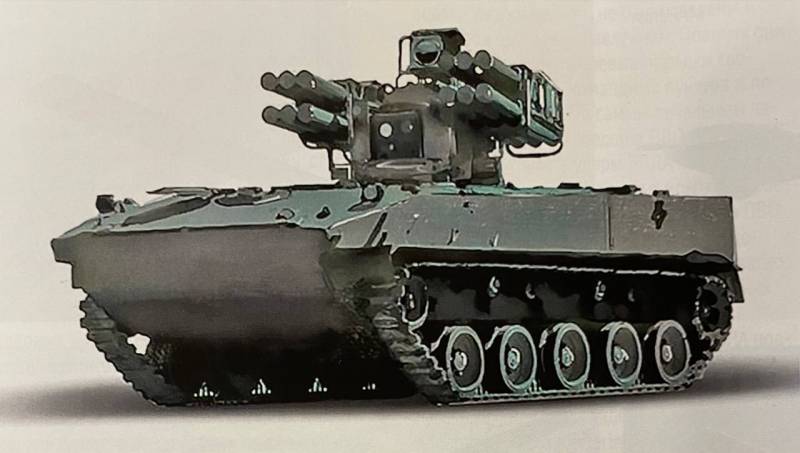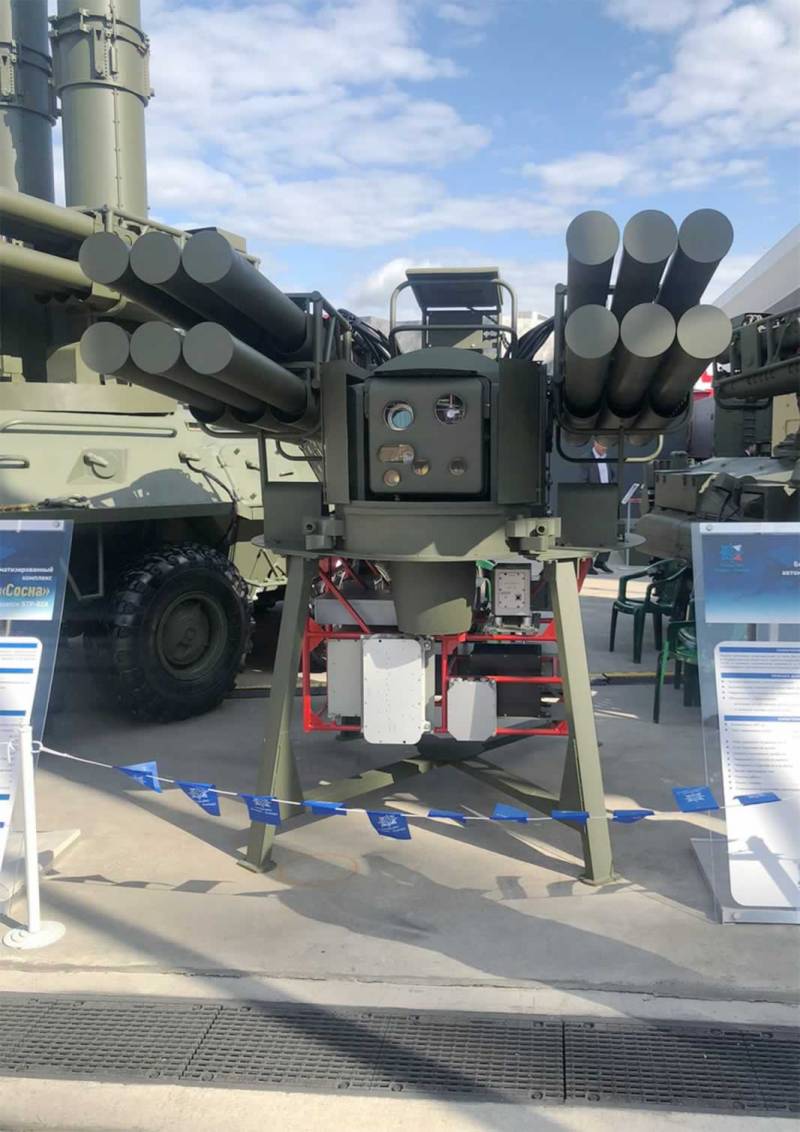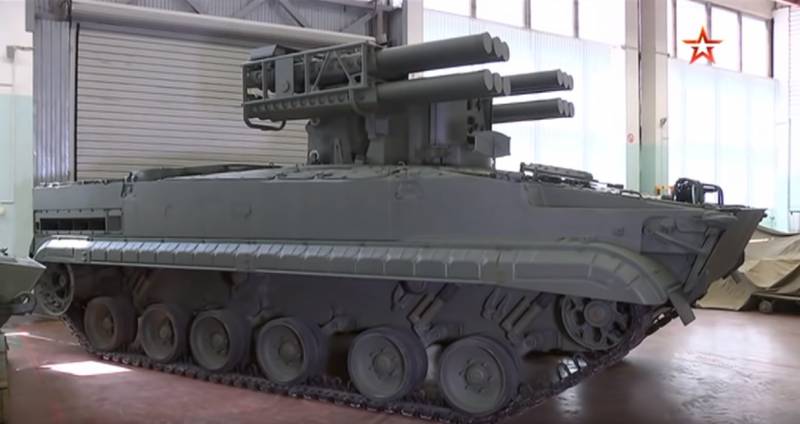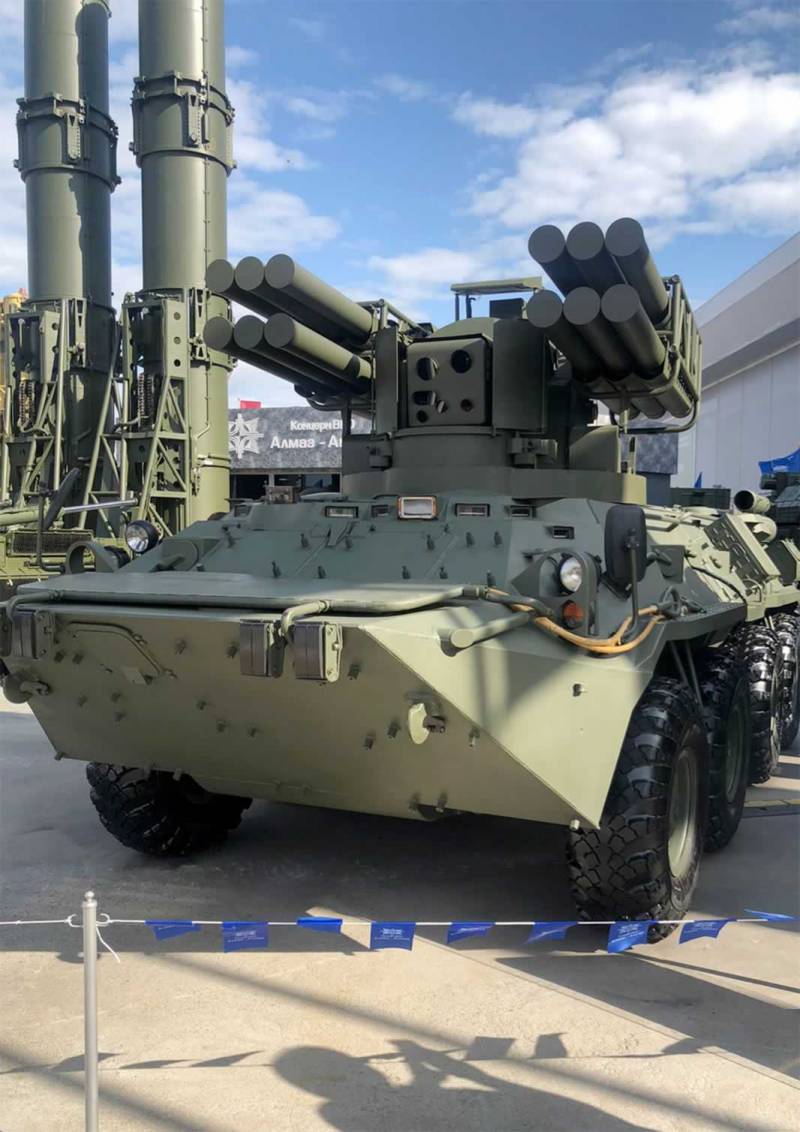SAM "Ptitselov" on the eve of adoption

The alleged appearance of the Ptitselov air defense system in the form of a photo collage. Photo Telegram / "Vestnik PVO"
Over the past few years, Russian industry has been developing a whole family of self-propelled anti-aircraft missile systems based on the Sosna unified combat module. One of these air defense systems was named "Ptitselov" and was created specifically for the airborne troops. According to recent reports, the development of this project has been completed. Thanks to this, in the foreseeable future, it will be possible to launch mass production of such equipment and send it to combat units.
Completion of work
On May 15, the press service of the state corporation Rostec spoke about the latest successes of one of the latest projects in the field of air defense. According to the official statement, the High-Precision Complexes holding, which is part of the corporation, has completed the development of the promising Ptitselov air defense system.
Unfortunately, the press service of "Rostec" did without details. It is not specified what activities have been carried out to date, and with what results they have ended. There are also no plans for the future. In particular, the issues of future serial production and supply of equipment to the troops have not been disclosed.
At the same time, Rostec recalled the main provisions of the Ptitselov project. So, the new air defense system is being created specifically for the airborne troops, taking into account their specifics and requirements. The complex was built using the serial chassis of the BMD-4M airborne combat vehicle and the Sosna unified combat module. The latter is equipped with modern Sosna-R guided missiles and should provide air defense in the near zone.
Previously, High-Precision Complexes developed, built and presented several other variants of air defense systems with the Sosna combat module. They differ from each other by the type of chassis used, as well as the respective capabilities and characteristics. In particular, the Ptitselov for the Airborne Forces, thanks to the BMD-4M chassis, can be transported by military transport aircraft and parachuted.

Combat module "Pine". Photo by KB Tochmash
On development stage
According to known data, the development of an air defense system with the code “Ptitselov” for air defense units of the Airborne Forces started no later than the middle of the 2016s. The name of this complex first appeared in the open press in May XNUMX. Subsequently, officials and anonymous press sources repeatedly reported certain news, and also disclosed the details of the project.
It was reported that the design bureau of precision engineering named after Ptitselov is engaged in the development of "Ptitselov". A.E. Nudelman, which is part of the holding "High Precision Complexes". They were going to spend several years on the creation of the air defense system. At the same time, the deadlines for completing work and starting production were shifted to the right several times. Probably, the specifics of the project and the need to solve difficult technical problems led to this.
In 2021, the commander of the Airborne Forces, Colonel General Andrei Serdyukov, announced that the deployment of new equipment in the troops was planned for 2024. Since then, plans of this kind have not changed. A few years ago, it became known that the new air defense systems would go into service with the anti-aircraft missile regiments of the Airborne Forces. In 2021, A. Serdyukov clarified that four formations will undergo such re-equipment. Purchases and deliveries of the Ptitselov complexes to the troops will be carried out on a battery-by-battery basis.
Judging by the latest news, the developers coped with all the difficulties and successfully completed the creation of a new air defense system. This means that the project is now on schedule and no more shifts are expected. Accordingly, it can be expected that in the near future the industry will master the production of Ptitselov, and next year the Airborne Forces will receive the first battery set of such equipment.
From ready-made components
It is curious that Tochmash Design Bureau, High-Precision Complexes and Rostec have not yet officially shown the Ptitselov product. However, its appearance and technical features are already well known. In addition, the image of a new combat vehicle got into free access. Also, at various exhibitions, the key components of this air defense system and similar samples in a different configuration were repeatedly demonstrated.

"Pine" on the BMP-3 chassis. A frame from the reportage of the TV channel "Zvezda"
"Ptitselov" is a short-range self-propelled anti-aircraft missile system designed for air defense units of the airborne troops. It is made on the BMD-4M tracked chassis and is equipped with the Sosna combat module with the necessary controls and Sosna-R missiles. The SAM crew includes two people - the driver and the commander-operator.
For use as part of the air defense system, the BMD-4M chassis undergoes minimal changes, mainly related to the layout and composition of internal units. At the same time, bulletproof / anti-fragmentation armor with enhanced frontal projection, high driving performance, etc. are preserved. A key feature of the chassis and air defense systems as a whole is the possibility of parachute landing.
The Sosna combat module is a full-rotation turret designed for mounting on a chassis with a payload capacity of at least 4 tons. Optoelectronic equipment is located inside the turret cap, and two rocking missile launchers are placed on its sides. Each is attached to six transport and launch containers with missiles.
OES "Sosny" has day and night channels with stabilization, and is also equipped with a laser rangefinder-target designator. The data from the optics is fed into the weapons control system, which calculates data for firing and guiding the missile. Work is carried out in automatic or semi-automatic mode. Air targets of the "aircraft" type are detected and taken for escort at ranges up to 30 km.
The 9M340 Sosna-R anti-aircraft guided missile is a two-stage bicaliber munition with a maximum diameter of 130 mm and a mass of 30 kg. The solid propellant engine accelerates it to 900 m/s and provides a launch range of up to 10 km and an altitude reach of 5 km. The missile can maneuver with a longitudinal overload of up to 40. The flight to the target is carried out "along the laser beam." The automatic air defense system directs the laser at the target and guides the missile at it.

"Pine" on a wheelbase. Photo by KB Tochmash
The missile is equipped with two warheads. With a direct hit on the target, the defeat is provided by armor-piercing. In case of passage nearby, there is a fragmentation warhead of a rod type with a proximity fuse. The total mass of two warheads is 7 kg.
The Ptitselov air defense system can move and conduct combat work in the same order as the Airborne Forces equipment - BMD-4M landing vehicles and BTR-MDM armored personnel carriers. Joint landing is possible, thanks to which the Winged Guards are not left without cover in any operations. Also unification of the chassis simplifies operation and maintenance.
While on duty and using missiles, the Ptitselov does not unmask itself with radiation, with the exception of a rangefinder laser. The probability of detection and defeat of the complex is sharply reduced. The high combat qualities of an air defense system are determined by the characteristics of a high-speed and maneuverable missile. In this case, guidance along the laser beam gives high resistance to interference.
With the use of the Sosna module, several other combat vehicles have already been manufactured and tested. They were built on the MT-LB, BMP-3 and BTR-80 chassis. Back in 2019, it became known that such air defense systems would go into service with the ground forces. Finished samples of this kind were shown at exhibitions.
Upcoming Upgrade
In general, even at the level of known data, the new Ptitselov air defense system compares favorably with the later modifications of the Strela-10 complex. The appearance and receipt of such an air defense system in a known way will improve the air defense of the airborne forces and, accordingly, increase their overall effectiveness.
For a number of reasons, the development of the Ptitselov product was delayed, and the terms for adoption had to be postponed several times. However, now the work has been completed, and the appearance of finished equipment in the troops is only a matter of time. The same applies to other options for the use of Sosna, which will have to strengthen the air defense of the ground forces.
Information